Gardeners know that there are certain tricks for growing healthy and productive tomato plants. Adding a thick layer of compost to tomato beds, applying a good, organic fertilizer throughout the growing season, and keeping tall tomato plants pruned and staked are all excellent ways to improve your tomato yield. But if you want to take your tomato patch to the next level this growing season, companion planting can help.

Companion planting is the method of pairing certain plants together in the garden that are mutually beneficial to each other. These companion plants can boost the growth of their neighbors, improve the flavor of the fruit, repel pests, attract pollinators, and much more.
In the following list, we’ll explore some of the best plants to grow with tomatoes. Many of these plants will work in both large, in-ground gardens and small container planters to give you flexibility with your planting arrangements.
Jump to:
15 best companion plants for tomatoes
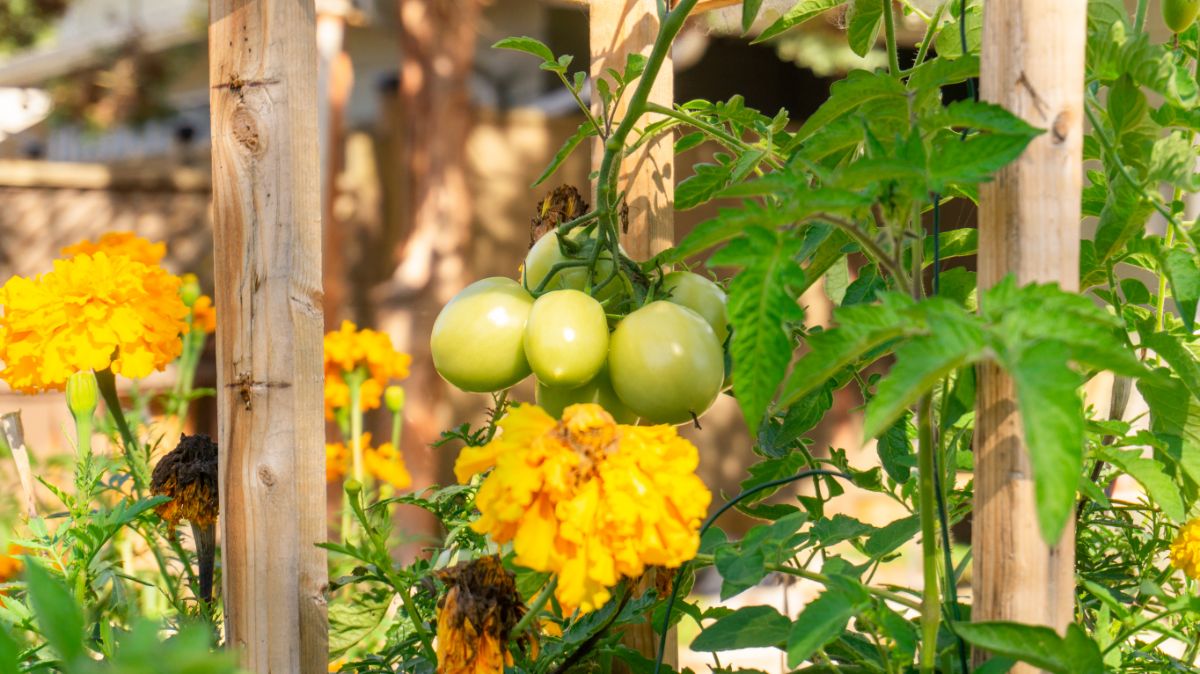
Below are our top picks for the best plants to pair with tomatoes. For natural pest control, improved growth, and healthier plants, these garden companions are matchless!
1. Basil
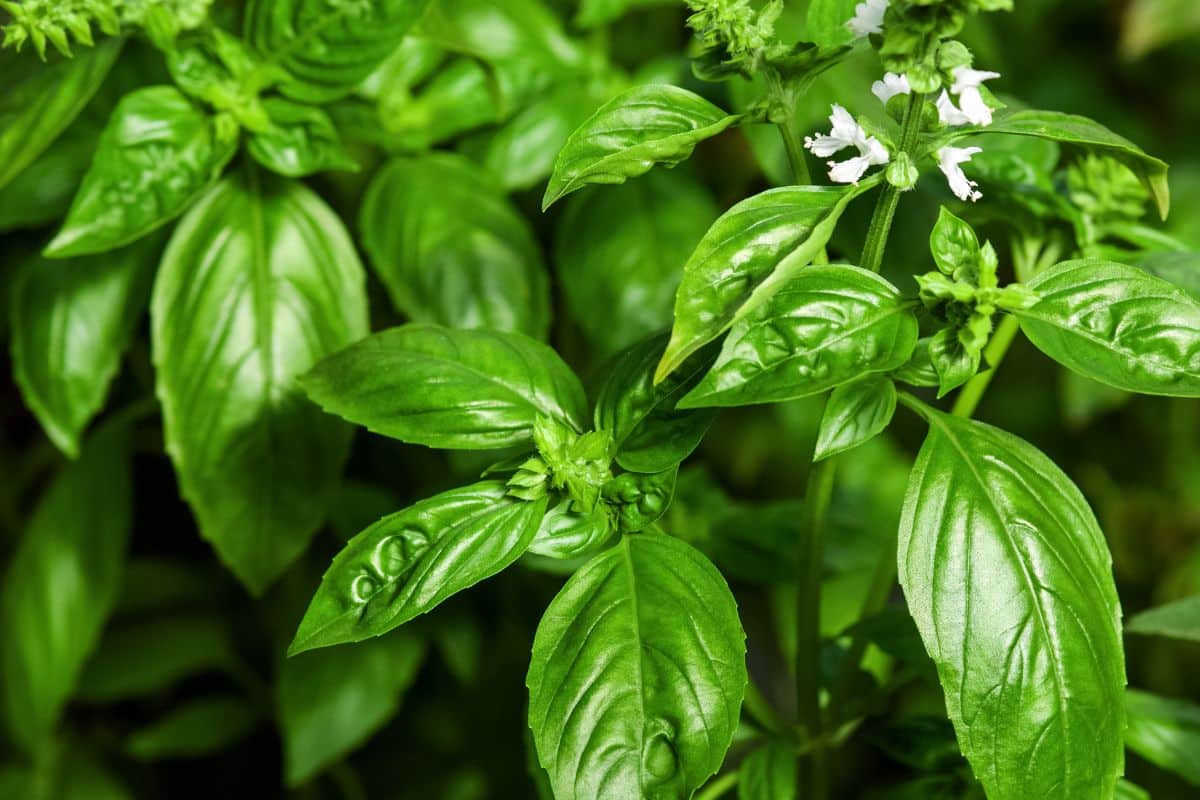
Basil and tomatoes aren’t just perfect partners in the kitchen. These two plants excel as companions in the garden too and are some of the best plant pairings you can find.
Basil’s strong scent naturally repels many insects that can devastate your tomato crop, like armyworms, tomato hornworms, thrips, aphids and spider mites. And, when grown together, these two plants naturally enhance each other’s flavor.
Since basil and tomatoes are often used together in recipes, planting them near each other is an easy way to make your garden design that much more efficient. Both plants work well in containers, so they’re small space friendly and tomatoes can even help shield basil’s delicate leaves from too much bright sun.
2. Borage

An often overlooked plant, borage is one of the top plants to keep to shield your garden from tomato hornworms. Like basil, borage also enhances the flavor of tomatoes grown nearby and it can even boost your plant’s growth.
A perfect pollinator plant, many gardeners simply don’t think to plant borage in their veggie beds because they aren’t sure how to use it. However, this delicious plant has a delicate, cucumber-like flavor and the pretty blue flowers make sweet garnishes on desserts and salads.
3. Beans and peas
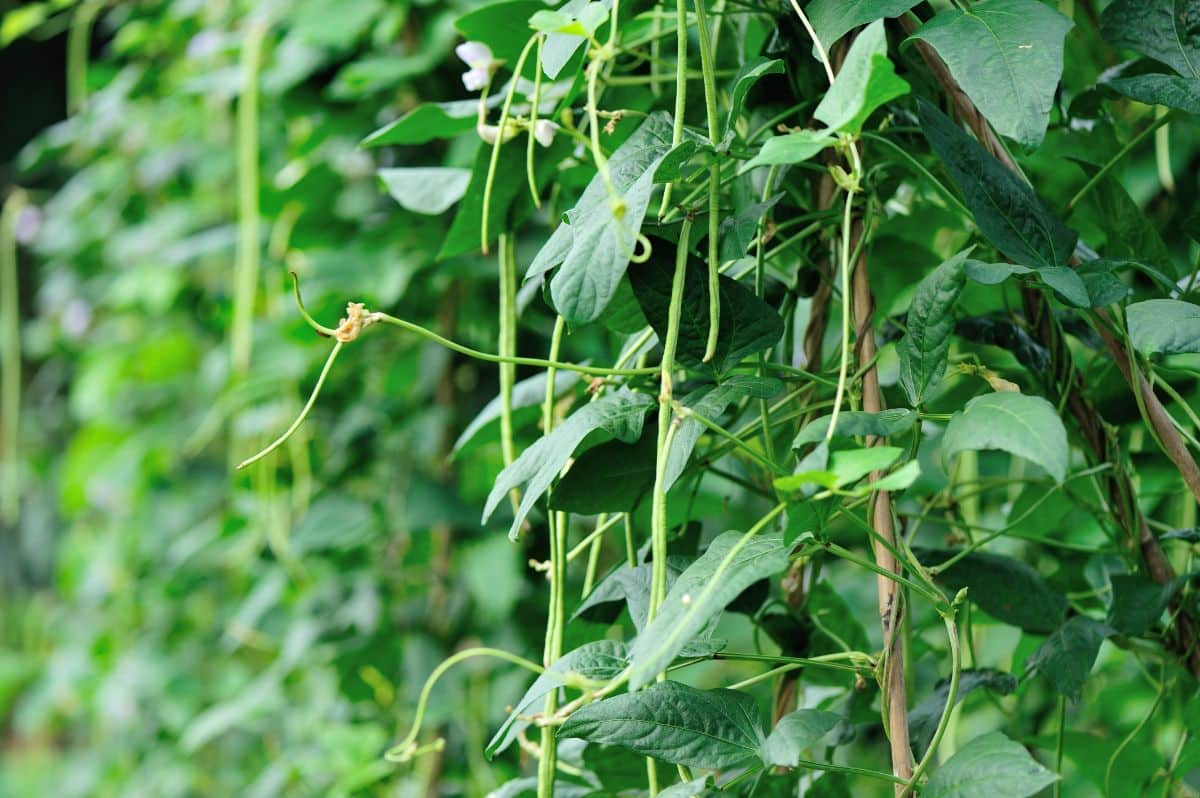
Beans and peas help to reduce humidity levels around tomatoes, which can hinder fungal spore growth. And cowpeas, also known as black eyed peas, act as a lure for stink bugs. Just keep in mind, if you’re working with a small gardening space, it’s usually better to grow bush bean varieties (rather than pole beans), as they grow smaller and won’t spread as much.
Legumes, like beans and peas, are also nitrogen-fixing plants, which can increase nitrogen in the soil and improve soil health overall. Any plants located near these industrious plants will naturally reap the benefits and growth stronger, taller and faster.
If you don’t want to grow beans near your tomatoes, try out winter-kill green manure legumes in autumn, like field peas and crimson clover. These plants will be killed by the frost in most spots and they’ll improve your soil health when they die back.
4. Marigolds
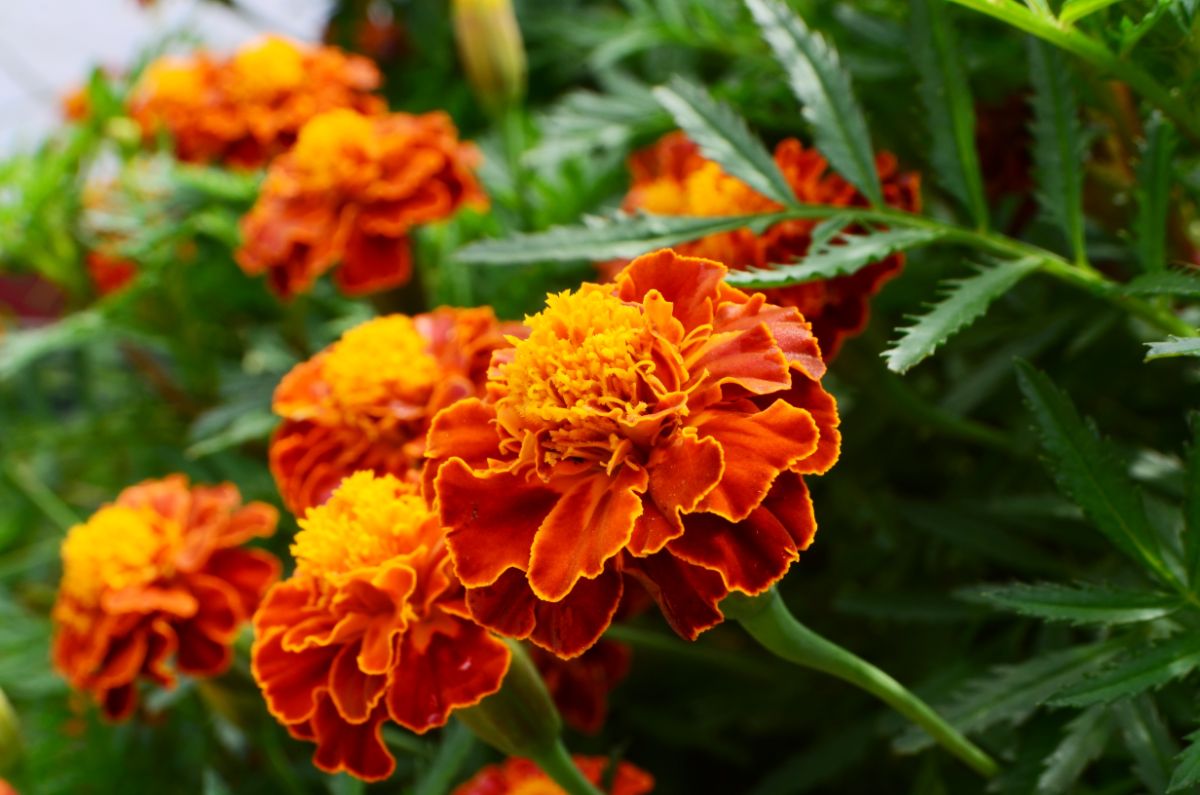
Marigolds are easy to keep flowers that are just right for interplanting among your tomatoes. These cheery blooms offer a nice burst of color in garden beds. But they do more than that.
Marigolds, particularly French marigolds, are some of the best plants to grow for natural pest control. They reduce the harmful root-knot nematode and help repulse squash bugs and tomato worms. But these plants are much loved by beneficial insects and will boost pollinator activity in the garden too.
5. Carrots
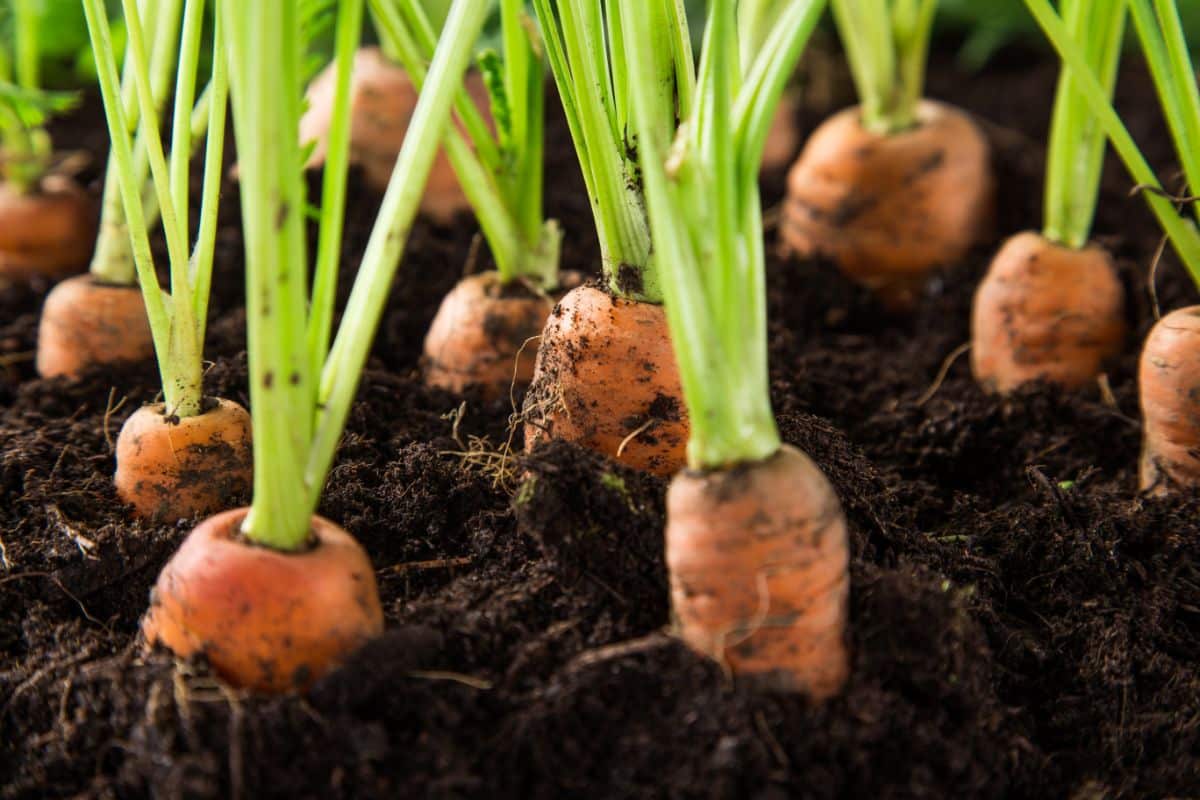
Carrots’ long tap roots help to loosen garden soil, which can improve the root growth of your tomato plants. Carrots also attract parasitic wasps that prey on caterpillars, like tomato hornworms. So, it’s no wonder why these two plants make some of the best plant pairings around.
Some gardeners even report that growing tomatoes and carrots together improves the flavor of both plants. Just keep in mind that carrot size may be reduce a bit if grown too close to tomatoes. But if you don’t mind slightly smaller carrots that are bursting with flavor, plant away!
6. Parsley
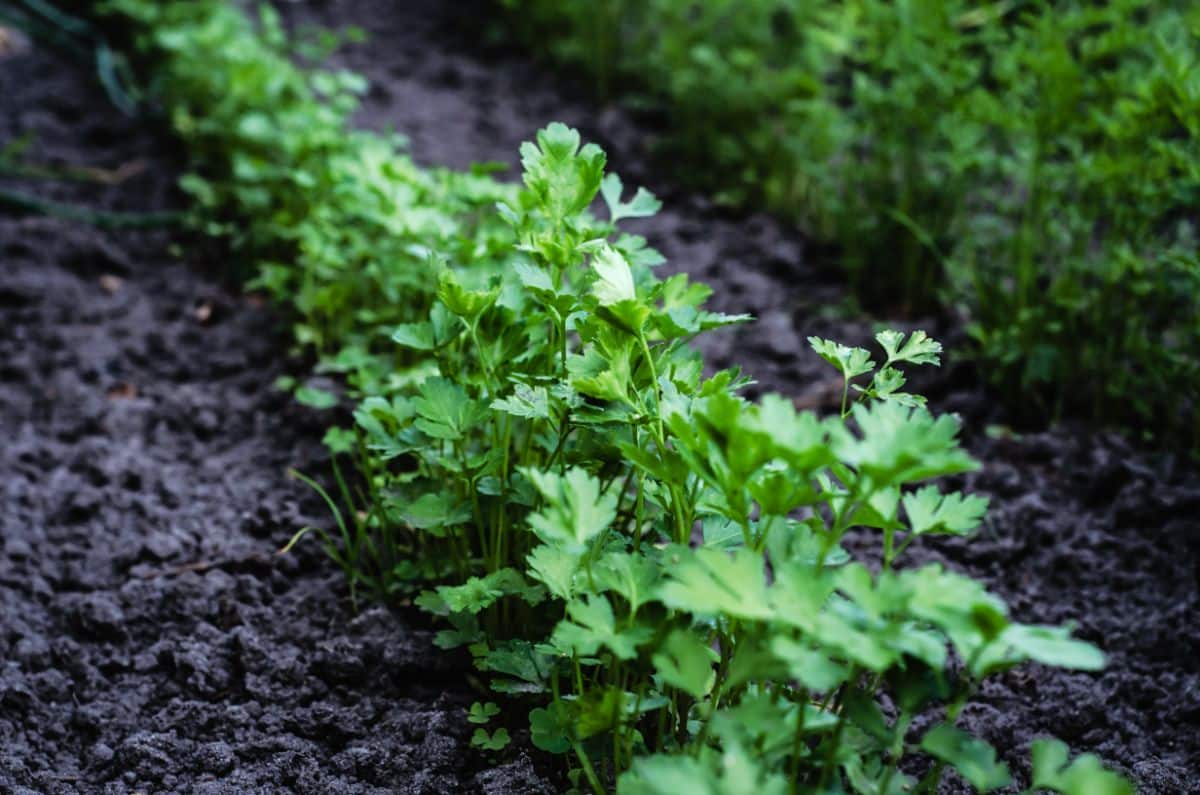
Like basil, parsley’s strong fragrance helps to keep garden pests away from your tomatoes. Parsley may also improve the taste of nearby tomato plants.
With similar growing requirements and watering needs, tomatoes and parsley should grow well together with minimal fuss. And, thanks to their small size, parsley plants can be easily interplanted in rows of tomatoes, or potted up in container gardens too.
7. Garlic
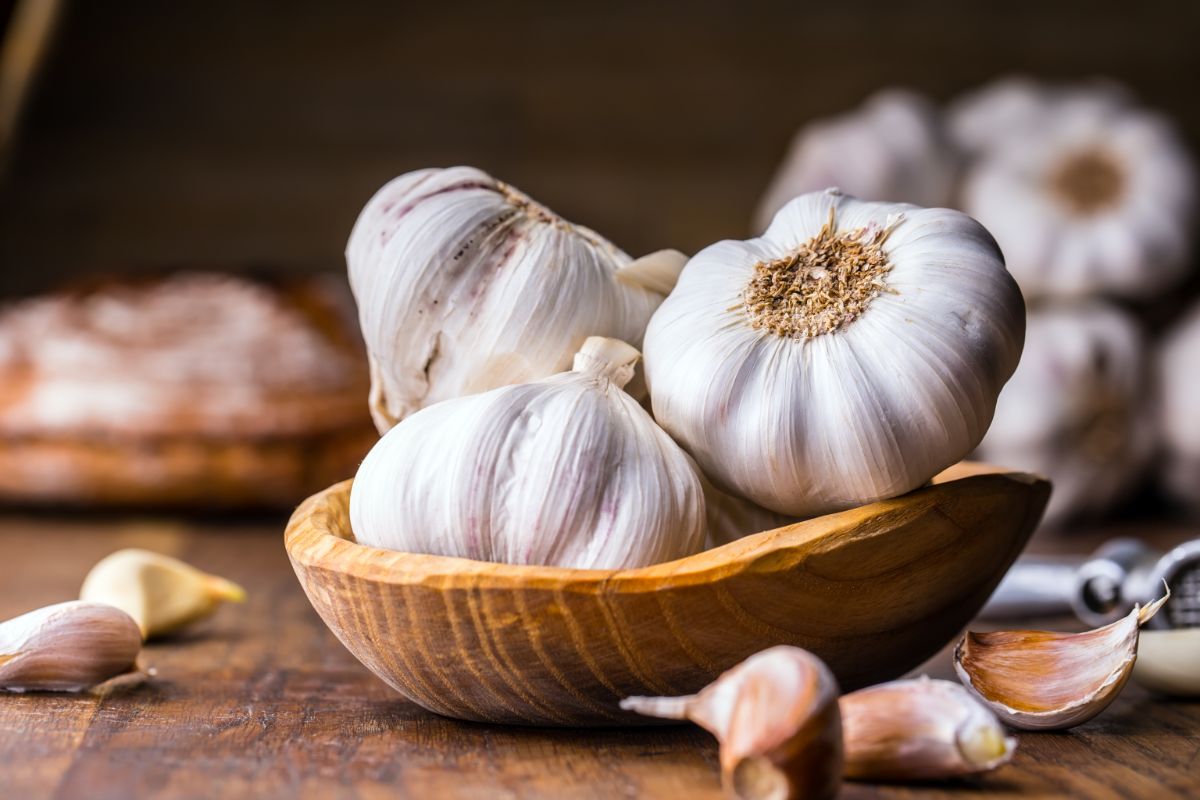
Like other alliums, garlic excels as a companion plant due to its strong scent that naturally repels many garden pests, including aphids, slugs, deer and rabbits. Garlic’s fine aboveground growth also means it won’t block out sunlight around your tomato plants.
Even better, garlic is harvested in the summer when tomato plants are just starting to take off. Harvesting your garlic at this time can free up valuable gardening space around your tomatoes during the growing season. Then, when your tomato plants die back in fall, it’s the perfect time to plant new garlic cloves.
Foliar garlic sprays have also been found to be helpful for preventing late blight.
8. Nasturtiums
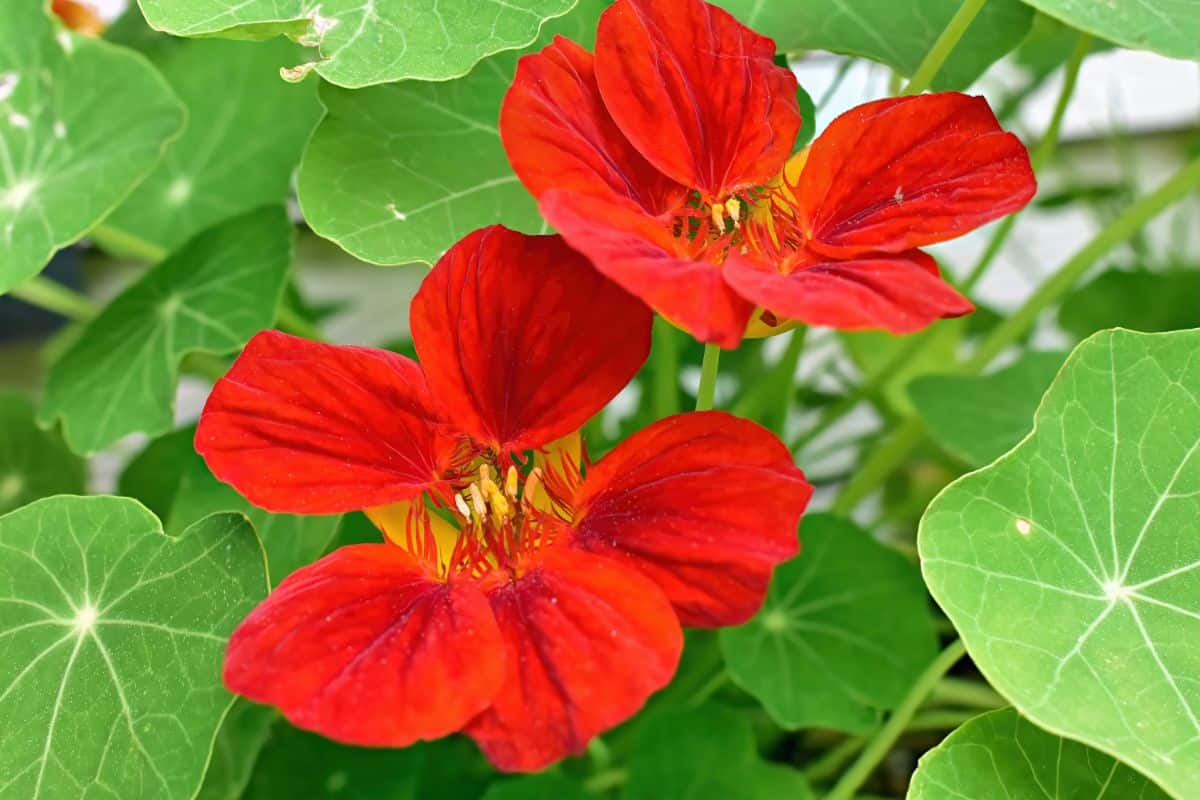
Nasturtiums repel many harmful insects and act as a trap crop for others, so they’re a great solution for keeping aphids, whiteflies and certain beetle species out of your garden. Their flowers are also very attractive to hoverflies and other beneficial insects, which means that planting them in your beds can help increase pollinator activity in the surrounding area.
Nasturtiums come in both mounding and vining varieties. Mounding nasturtiums grow more compactly and won’t spread over your beds, making them a good choice for small garden spaces or container planting arrangements. And don’t forget, nasturtium’s edible flowers make stunning salad toppers!
9. Oregano
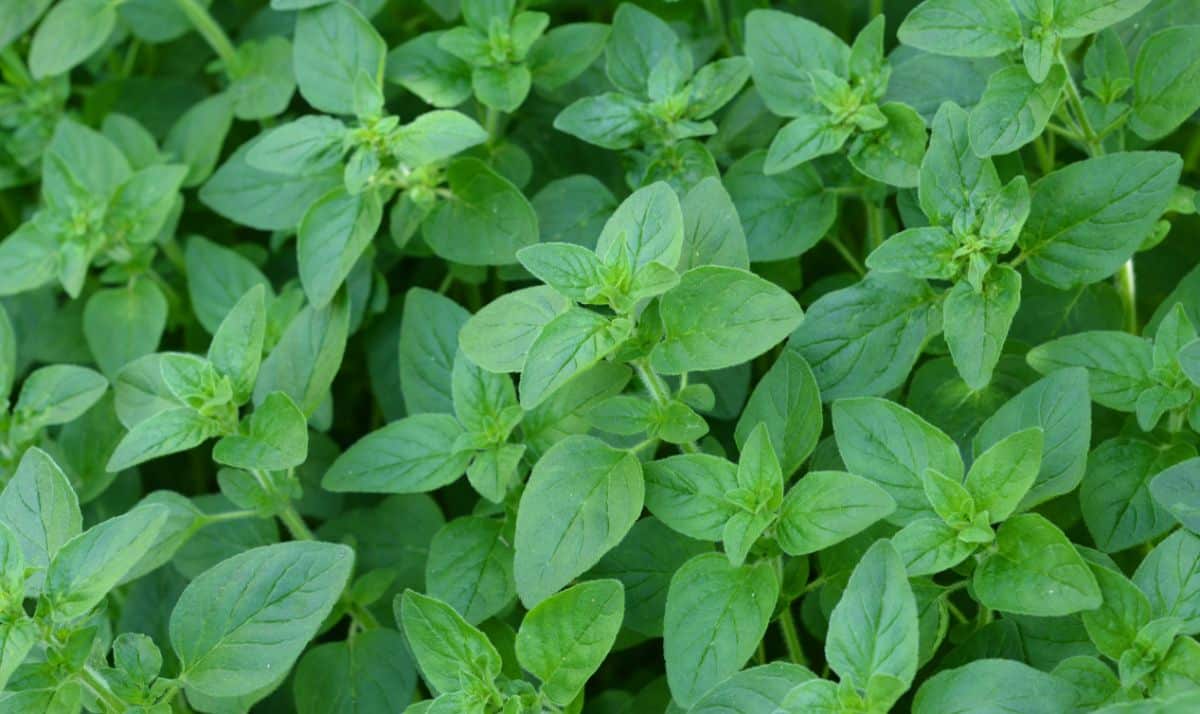
Another strong smelling herb, oregano is a natural pest-deterrent for many garden insects. It’s also a pretty low maintenance plant that requires minimal care in the garden, meaning it won’t increase your garden chores one bit!
Keep in mind that oregano is quite cold hardy and grows as a perennial in most areas. So, when planning out your tomato beds, remember that oregano will likely come back next year, but your tomatoes won’t.
10. Chives
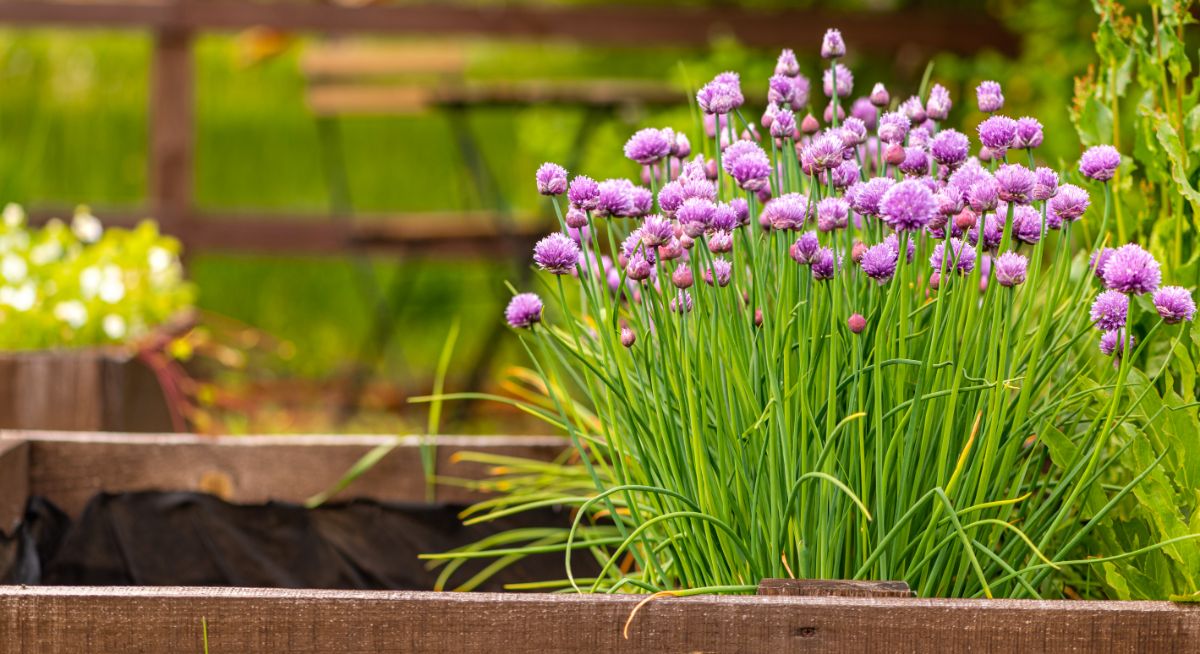
Like garlic, chives are perfect for natural pest control, protecting nearby plants from aphids, mites, deer, rabbits and more. When in bloom, chives are excellent pollinator plants too and naturally increase beneficial insect activity in your garden.
Since chives grow in tight mounds, they are great for container planting or in-ground beds. They also don’t spread the way many other herb plants do, so you won’t need to worry about them taking over your tomatoes.
11. Asparagus
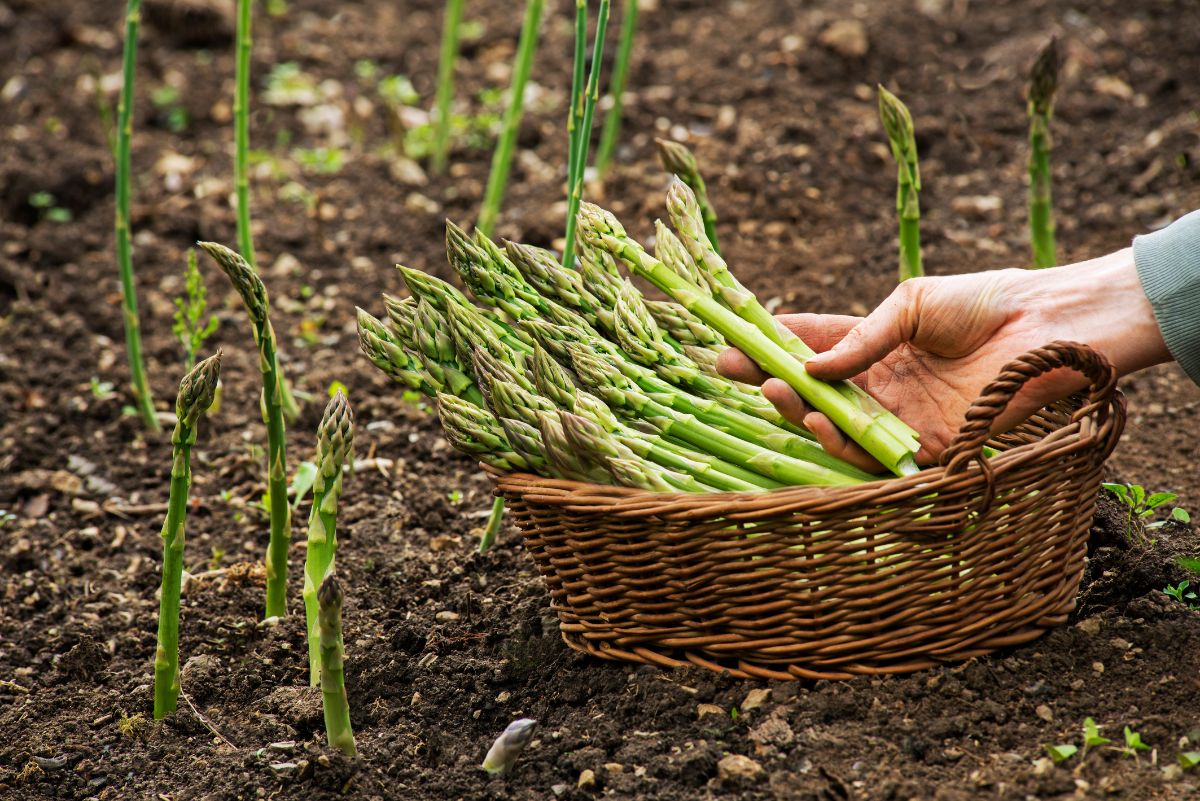
Asparagus and tomatoes are another excellent companion plant pair. Tomatoes naturally release solanine, which repels the dreaded asparagus beetle. In exchange, asparagus helps to combat harmful nematodes that can devastate tomato plant roots.
Think ahead with your garden planning as asparagus plants, like oregano, come back year after year. In fact, it can take 3 or more years after planting asparagus crowns to get your first edible spears, consequently, patience is key when growing these plants.
12. Beets and radishes
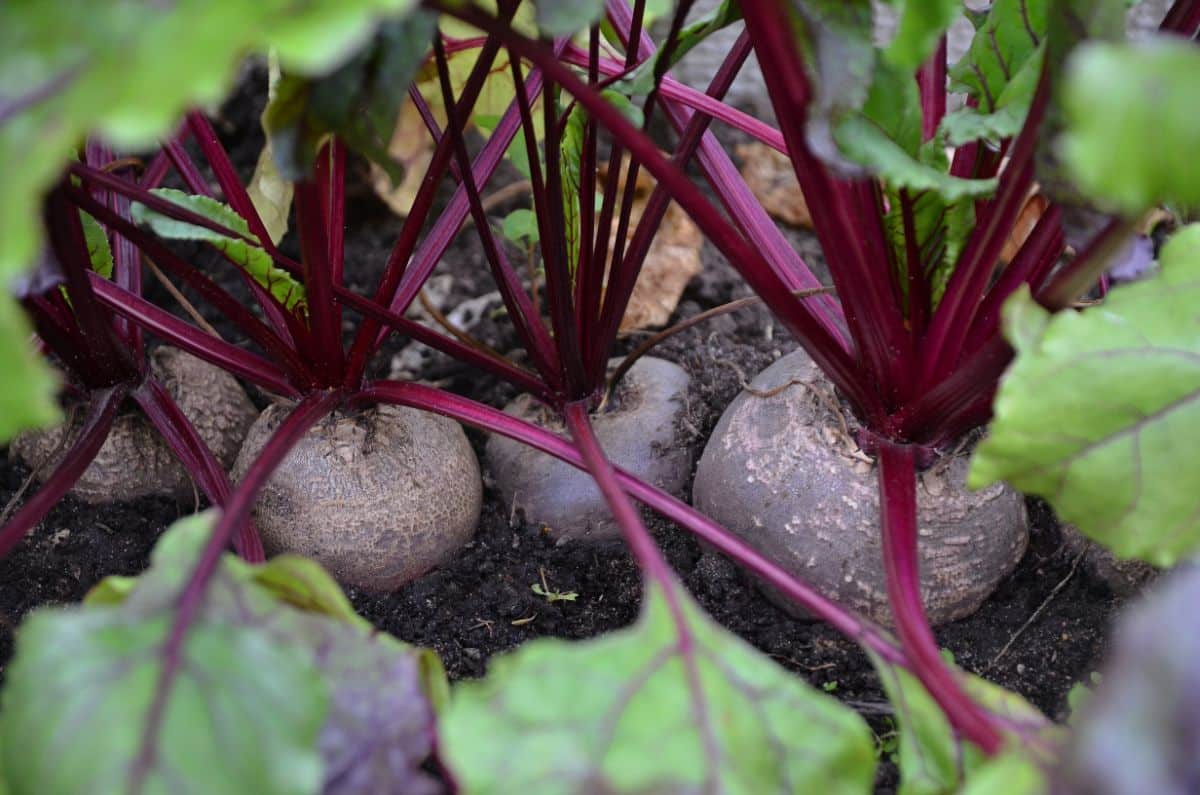
Beets and radishes are cool weather plants that grow quite fast. This makes them ideal plants to grow in tomato beds in early spring and late fall, when temperatures are too cool for your nightshades.
Because they are low growing and not very competitive, these roots veggies can also be interplanted around tomatoes during the growing season. Their low growth habit won’t compete with tomatoes for sunlight and planting in this manner is an excellent way to maximize your gardening space.
13. Lettuce
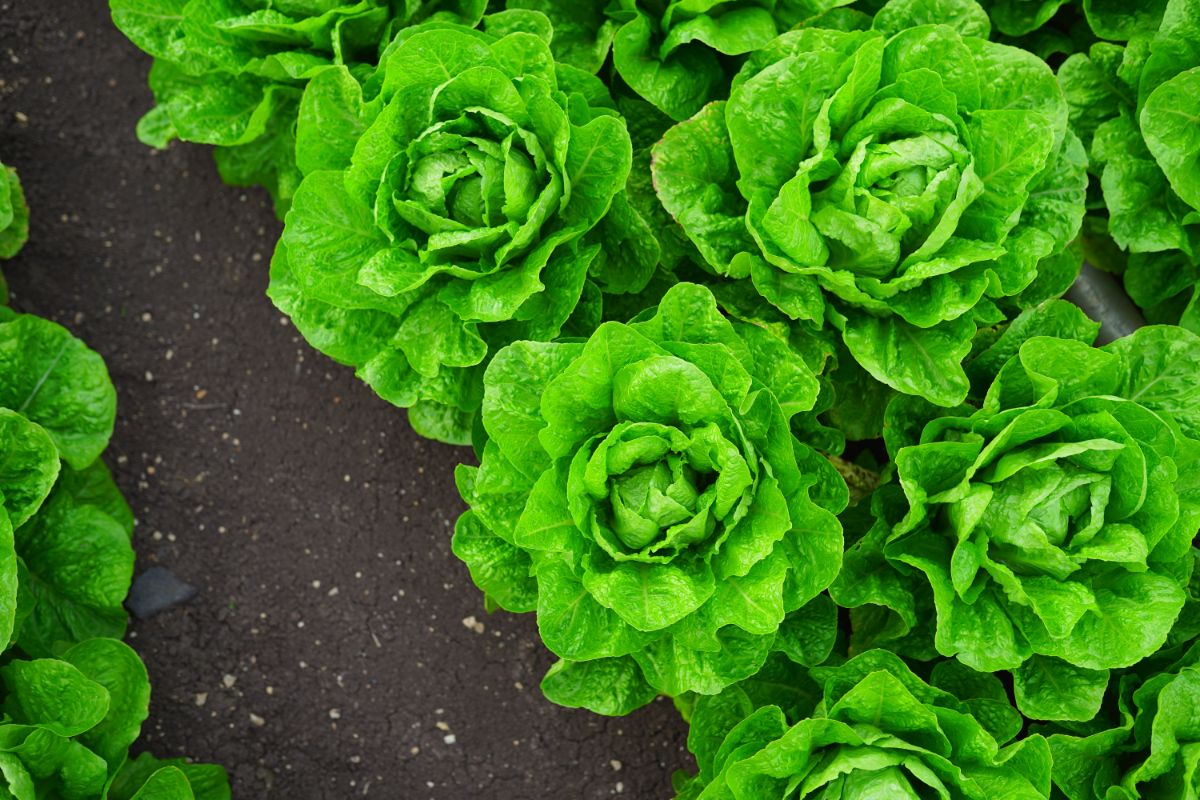
Since lettuce plants grow compactly, they can easily be wedged in between tomato plants to make the most out of your available growing space. Smart gardening at its finest!
Additionally, because lettuce plants grow low to the ground, they can function as a living mulch, shielding the soil from the sun and lowering evaporation rates. In turn, tomatoes’ tall and leafy growth habit provides shade for tender lettuce leaves, protecting them from the heat.
14. Thyme

Most herbs make good companion plants for a wide variety of vegetables, and thyme is no exception. The volatile oils in thyme leaves can repulse a number of insects and have even been found to reduce egg-laying in armyworms.
When allowed to bloom, thyme will also attract parasitic wasps, which prey on tomato hornworms and other caterpillars.
15. Dill
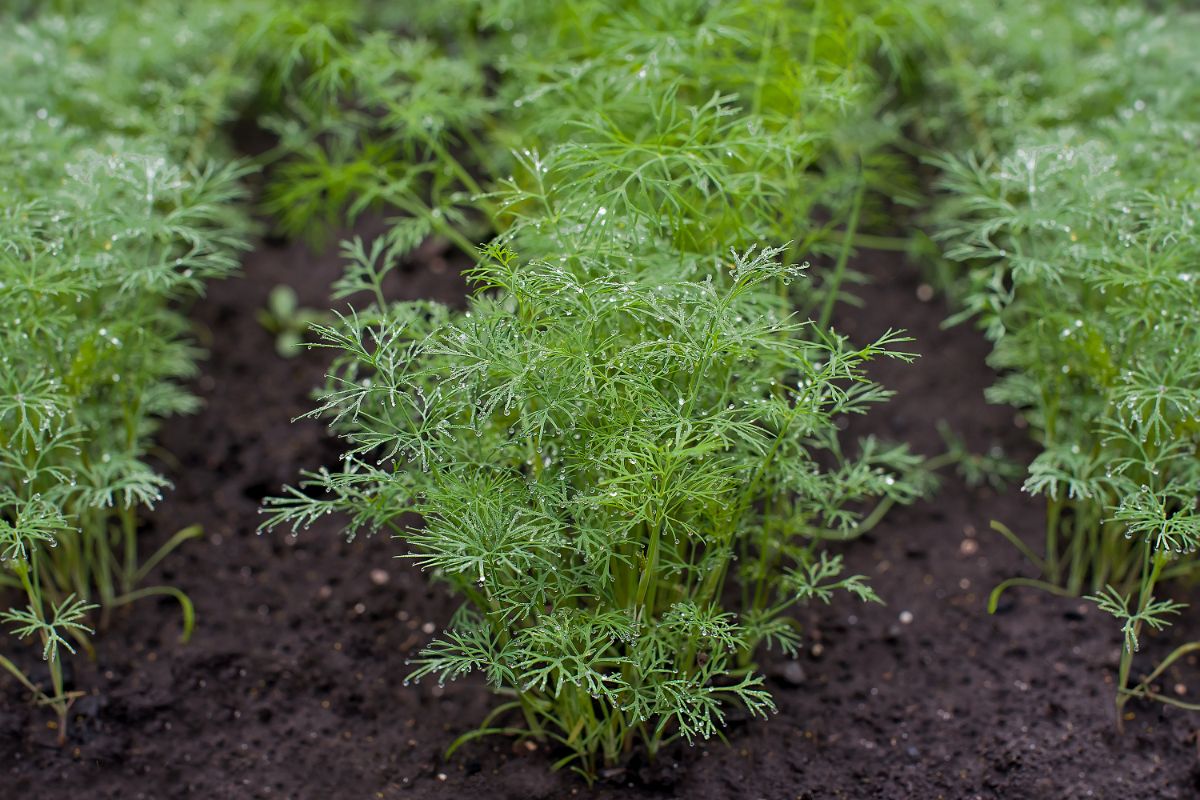
Like carrots, dill is known for luring in parasitic wasps for natural pest control. Dill is also a much smaller plant, so you don’t need to worry about it outcompeting your tomatoes.
In fact, tomatoes’ large size is perfect for shielding delicate dill plants. When summer temperatures rise, dill plants will often bolt and become inedible. But planting your dill under the sheltering branches of some tomatoes may help slow bolting and extend your growing season a bit.
Plants to avoid planting with tomatoes
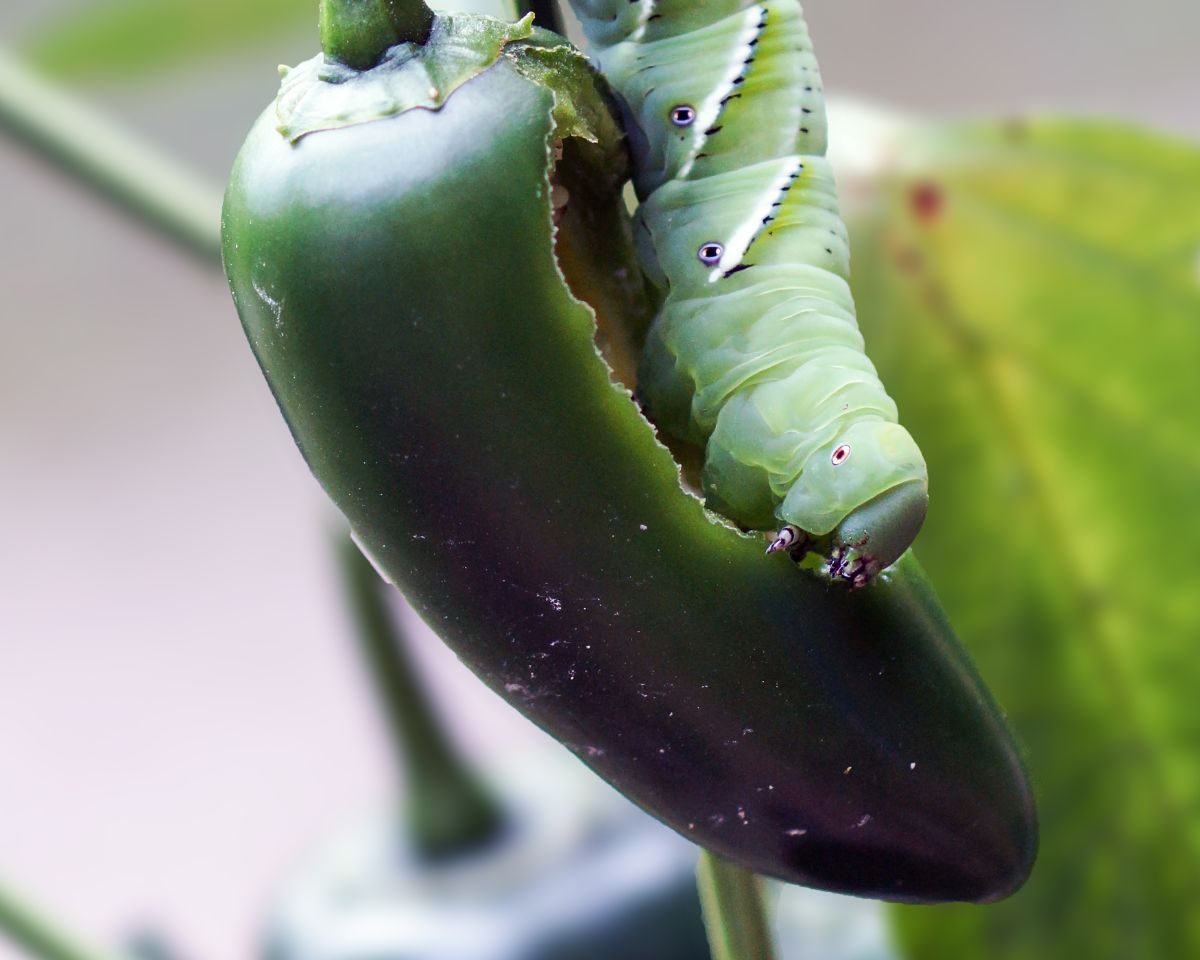
Although many plants work well when grown near tomatoes, there are a few exceptions. Due to their unique properties and growing needs, some plant species simply don’t work as tomato companions. Whenever possible, avoid planting the following plants near your tomatoes:
· Other nightshades.
Peppers, eggplants, groundcherries, tomatillos, potatoes and tomatoes are all members of the same family: the Nightshade family. Because they are closely related, these plants have similar growing needs and will often compete with each other for the same soil nutrients. What’s more, they are all heavy feeders, so they can deprive tomatoes of fertilizer.
Additionally, these plants are all susceptible to both early and late blight, which can accumulate in soil and easily spread from plant to plant. Hornworms and other pests can target many of these plants too, which means if your peppers suffer from insect attack, your tomatoes likely will too.
· Corn.
Corn and tomatoes are susceptible to the same garden pest: Helicoverpa zea, also known as the tomato fruitworm or the corn earworm. This means that if your corn suffers from an infestation, it may spread to your tomatoes too. Corn is also a heavy feeder and may outcompete your tomato plants.
· Brassicas.
Broccoli, cauliflower, Brussel sprouts and other brassicas should not be planted near tomatoes as they will stunt the growth of your tomato plants. Brassicas are also heavy feeders that may deprive tomatoes of the vital nutrients they need to grow.
· Fennel.
Fennel doesn’t make a good companion for most garden plants, and tomatoes are no exception. To reduce competition from its neighbors, fennel naturally releases a substance that inhibits the growth of nearby plants. However, because fennel is a great pollinator plant, some gardeners choose to grow it by itself in a pot within their garden beds.
· Walnut trees.
Like fennel, walnut trees are notorious for their ability to suppress the growth of most neighboring plants. This is due to a chemical called juglone, which walnut trees release. Tomatoes are also susceptible to walnut wilt.
Frequently asked questions
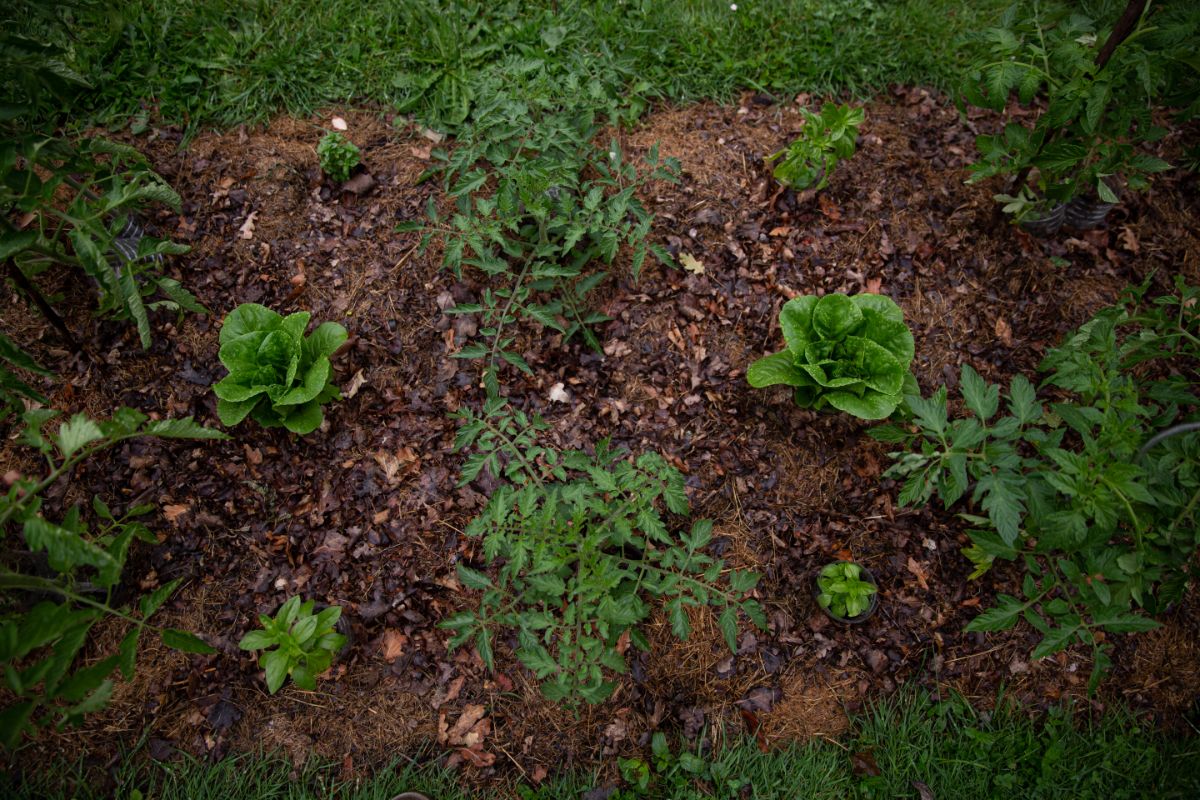
Whenever possible, avoid planting other members of the nightshade family, like potatoes and peppers, near your tomatoes. Because these plants are closely related, they are susceptible to the same types of pests and diseases, which can easily spread from plant to plant.
Basil is one of the best companions for tomatoes, as it can enhance tomato flavor, boost plant growth and help repel common tomato pests. For natural pest control purposes, nasturtiums, marigolds and borage are other great picks.
Peppers and tomatoes are closely related and have similar growing requirements. While that does mean they can grow well together in theory, they also attract the same sorts of pests and diseases. As a result, pairing these plants together may promote disease and pest spread in your garden.
Winter-kill cover crops, like oats and forage radishes, are good choices for tomato beds. But, if you really want to boost your tomatoes’ growth, try out nitrogen-fixing cover crops in the legume family, like crimson clover and field peas.
Summary
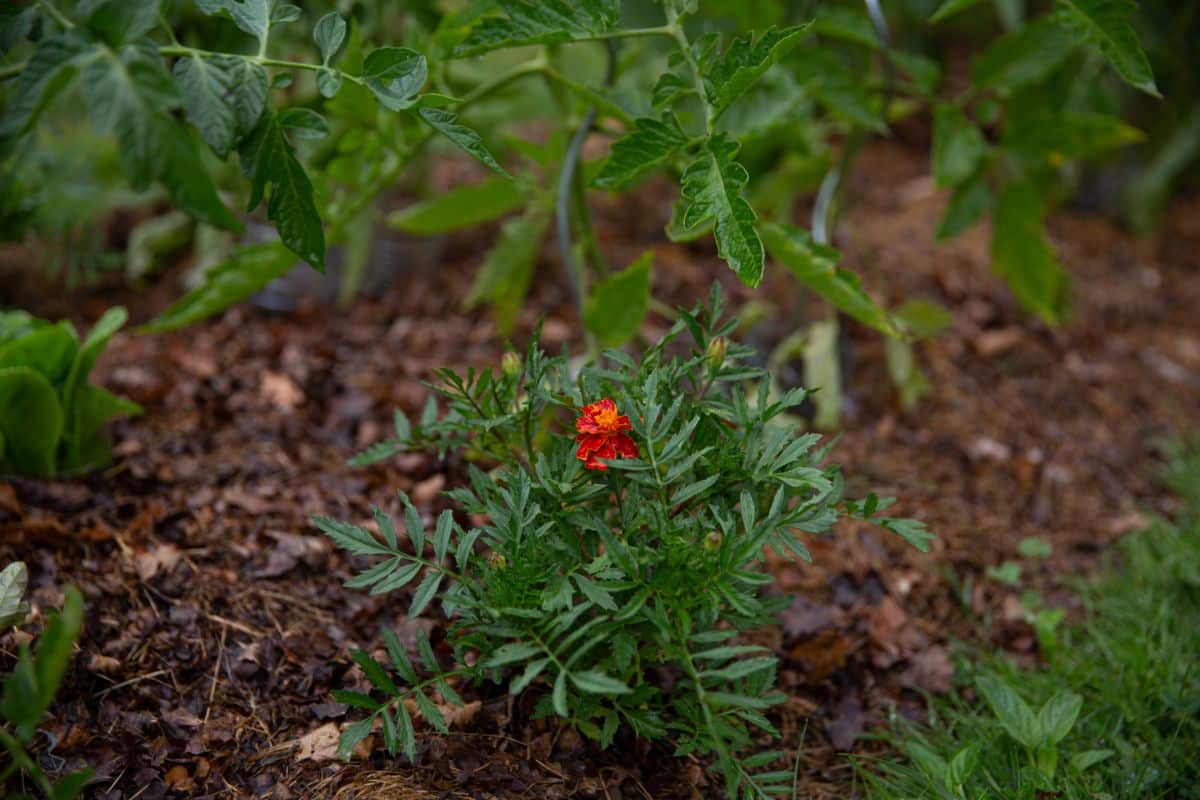
Ensuring your tomato plants have adequate water, fertilizer and sunlight is essential to growing a healthy tomato harvest. But if you really want to take your tomato crop to the next level, companion planting may be just the ticket.
Companion plants naturally benefit each other, boosting growth, improving flavor and repelling noxious pests. So, if you’re looking for a way to improve your tomato yield this season, try interplanting your tomatoes with some of the companion plants we’ve explored today. When harvest time rolls around, you’ll be glad you did!
If you liked this article, check out our guide on the best fertilizers to use on tomatoes for even bigger plants.

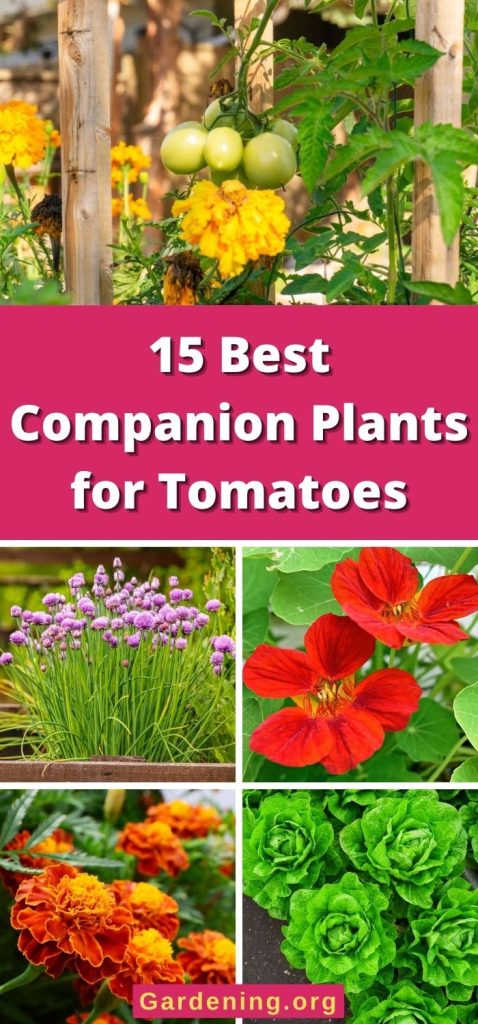
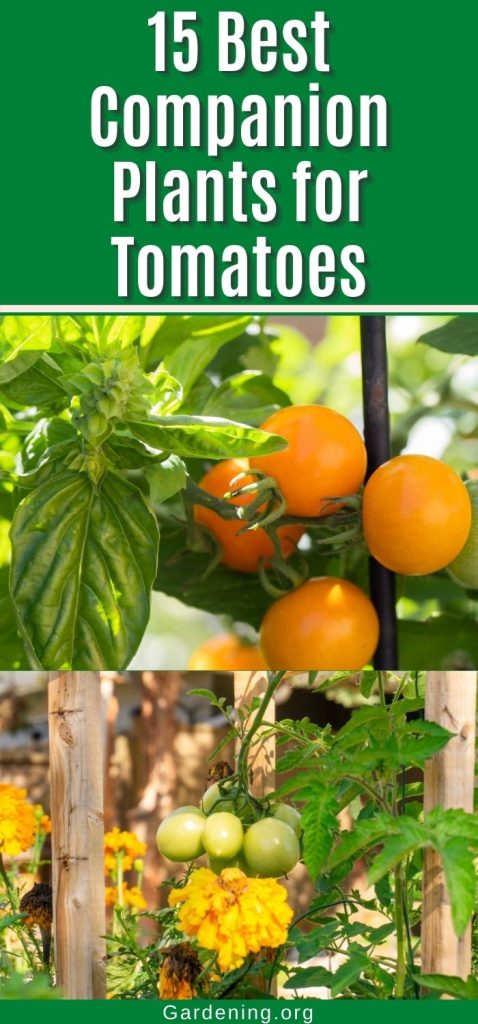
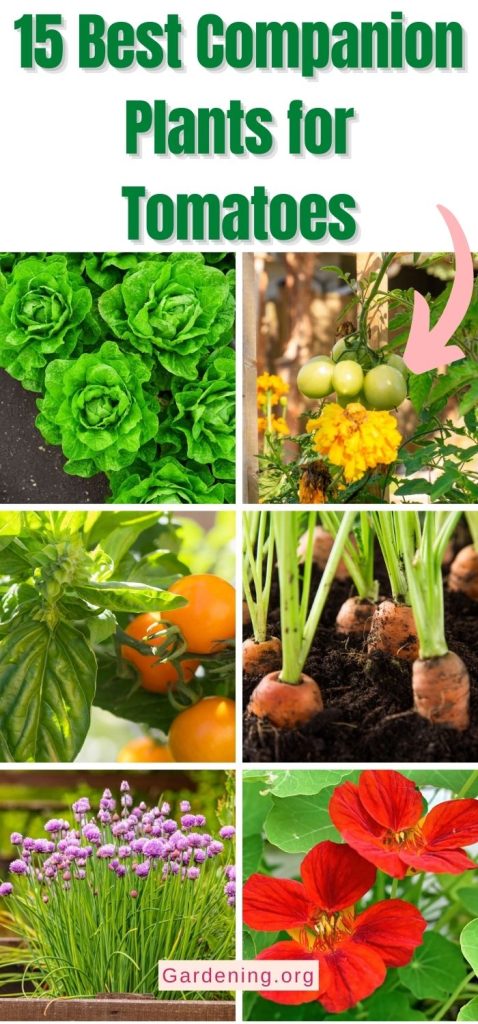
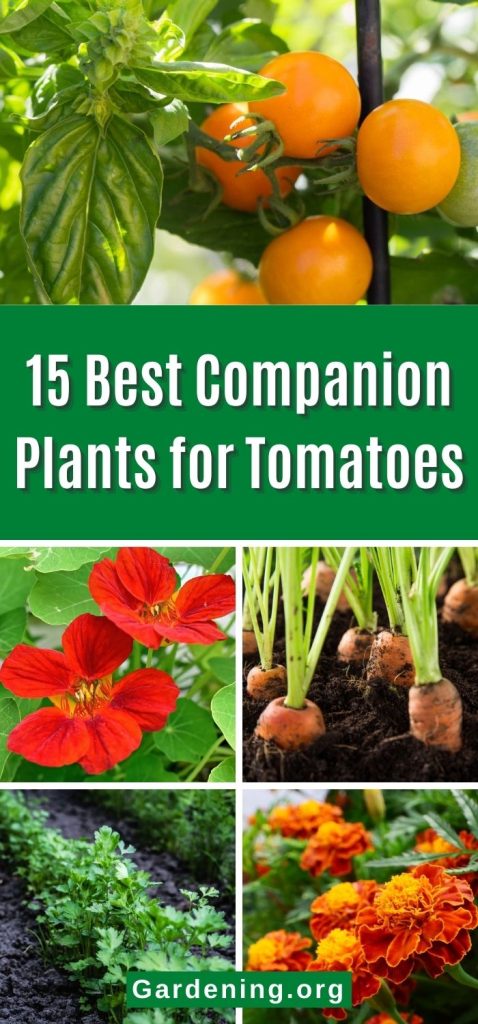
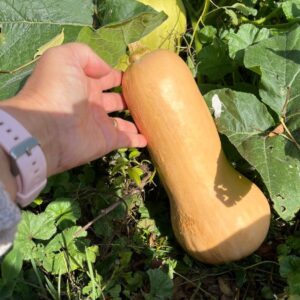



E Joan Nuttall
They grew every where in South Africa with no care. I miss them so much! I can't even get them to germinate in the Northern hemisphere!😏
Mary Ward
Have you tried starting your tomato seeds inside? Many northern locations do not have a long enough season to germinate and grow to harvest outdoors.
Greg Azzopatdi
Great and informative. What was omitted was not to. Plant cucumbers next to tomstoed6 due to the development n spread of Powdery Mildue on pumpkin, cucumbers n mellons.
Mary Ward
Hi Greg. For this article we were focusing on what you should plant as companions, but for all plants there are some that you should not plant together.
Kamala Johnson
Wow! Ty for that, it explains why my garden was NOT real successful last season! Sooo good to know!